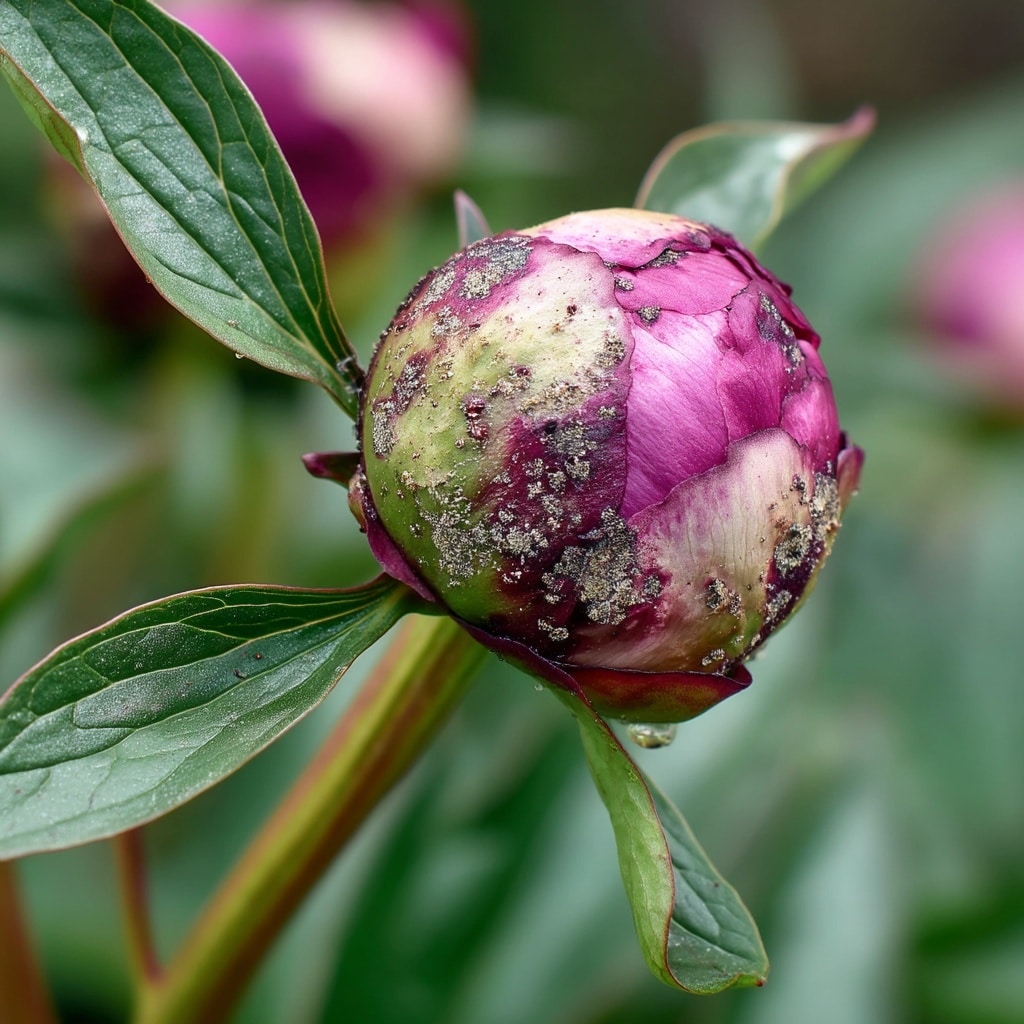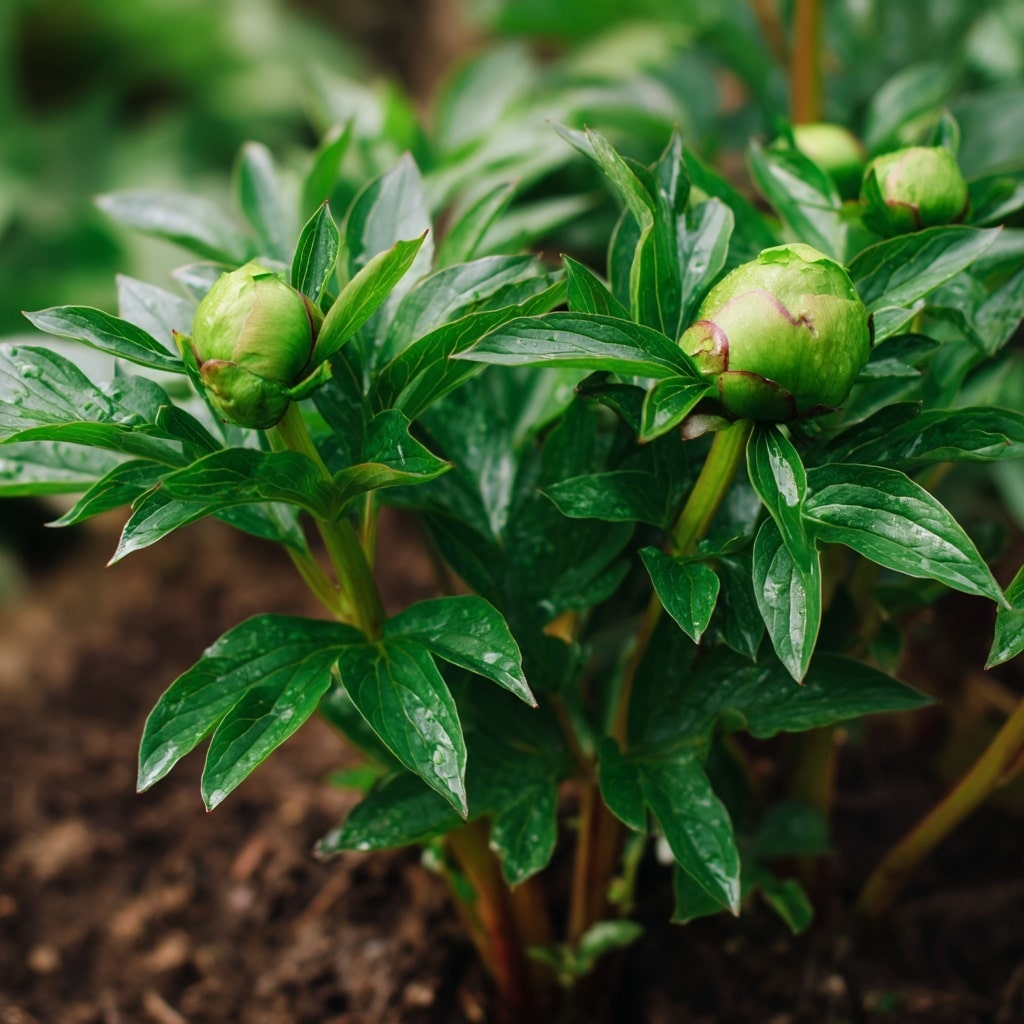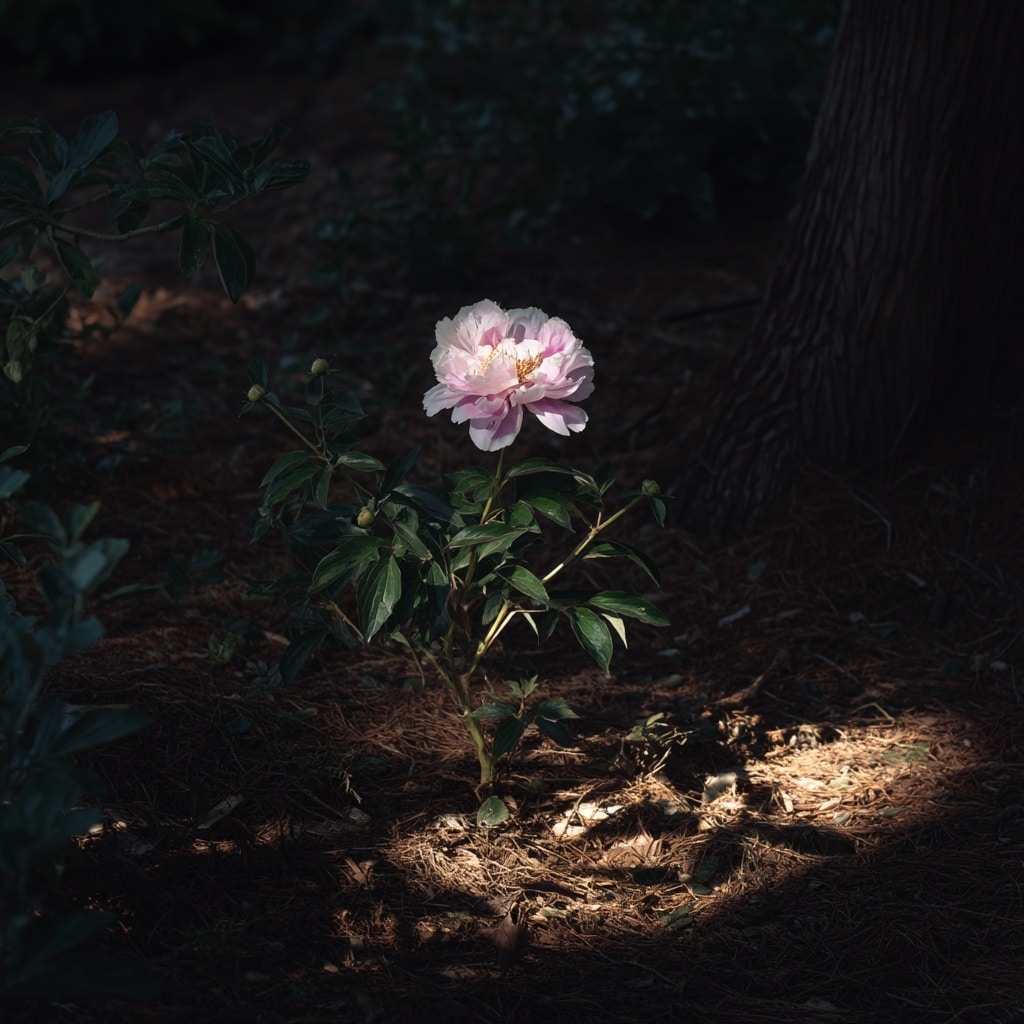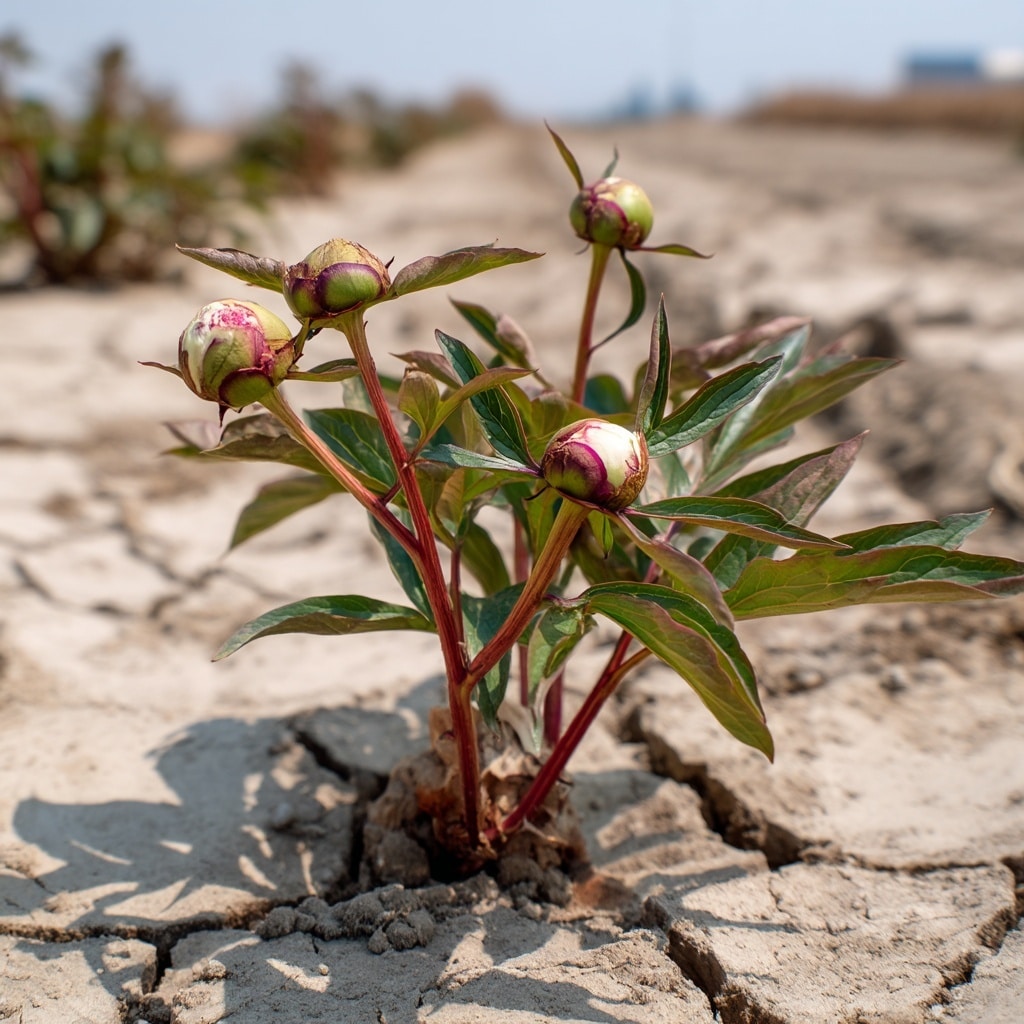Peonies are prized for their lush, fragrant blooms, but when they fail to flower, it leaves many gardeners puzzled and disappointed. You might see plenty of healthy foliage, but no buds, or worse — buds that never open. The good news? Most blooming issues can be traced to just a few key causes, and nearly all of them are fixable. Whether your peonies are newly planted or well-established, identifying the problem is the first step to bringing your plant back into bloom.
Table of Contents
1. Planted Too Deeply
One of the most common mistakes gardeners make with peonies is planting them too deep. While other perennials and bulbs benefit from deeper placement, peonies are surprisingly picky about planting depth.
The key is to position the “eyes” — the small, pinkish buds on the root crown — no more than 1 to 2 inches below the soil surface. If they’re buried too deep, the plant may grow healthy foliage but never produce flowers. This is often called a “blind” peony, meaning it forms leaves but no buds.
When planting or replanting peonies:
- Dig a wide, shallow hole
- Lay the root horizontally with the eyes facing up
- Cover lightly with soil — never mound mulch directly over the crown
Getting this step right is critical to blooming success in future seasons.
2. Fungal Diseases (Botrytis Blight)

Sometimes, your peonies start to form buds, but they never open — or worse, they turn brown and rot. This is often a sign of Botrytis blight, a fungal disease that thrives in cool, wet spring conditions.
Early symptoms include:
- Soft, squishy buds that stay small or collapse
- Buds turning brown during the “marshmallow stage” (when they feel soft and spongy)
- Gray mold on stems or flower buds
- Rotting shoots near the soil line
To reduce the risk of fungal problems:
- Space your peonies to allow air circulation
- Avoid overhead watering
- Remove and dispose of any infected plant parts in fall (do not compost)
- Use organic fungicides only if the problem is persistent
With a little cleanup and prevention, your peonies should return to healthy blooming the following year.
3. Plant Is Too Young

If your peonies haven’t bloomed yet, age could be the reason — especially if they were recently planted. Peonies are long-lived perennials, but they don’t typically flower in their first or even second year.
Newly planted bare-root peonies need time to:
- Establish a strong root system
- Develop enough energy reserves
- Form mature “eyes” capable of producing buds
For most varieties, it takes 2 to 3 growing seasons before you’ll see a full bloom cycle. During that time, your plant may produce only leaves and stems, which is completely normal.
✅ Tip: While you wait, focus on giving your young plant ideal conditions — full sun, correct planting depth, and light feeding — to help it establish faster.
4. Recently Transplanted or Divided

If you’ve moved or divided your peonies in the past year or two, that disruption could be why they’re not blooming. Peonies don’t take well to change — especially when their thick roots are disturbed.
After transplanting or division, plants often enter a recovery phase, focusing their energy on rebuilding roots instead of forming flowers. It’s completely normal for them to skip blooming for one or two seasons.
To support recovery:
- Make sure the plant is at the correct depth (eyes 1–2 inches below surface)
- Water consistently during dry periods
- Avoid heavy fertilizing — too much nitrogen can delay blooming further
Patience is key. Once your transplanted peony settles in, it should reward you with blooms again.
5. Not Enough Sunlight

Peonies are sun lovers. If yours are growing in partial shade or tucked behind taller plants or structures, they may simply not be getting the light they need to bloom.
For healthy growth and flower production, peonies require:
- At least 6 to 8 hours of direct sunlight per day
- Open air circulation (no crowding by shrubs or trees)
- A location where morning sun dries dew quickly, reducing disease risk
In too much shade, peonies will often grow long, weak stems and lush leaves — but no buds. They just don’t have the energy reserves to produce flowers.
☀️ Fix: If sunlight is limited, consider relocating your peony in early fall. Choose a spot with full sun exposure and well-draining soil to boost blooming in future seasons.
6. Frost Damage to Buds

While peony roots are hardy enough to survive freezing winters, their flower buds are far more delicate — especially once they begin to swell in early spring. A sudden late-season hard freeze can damage or destroy buds that were just about to bloom.
Telltale signs of frost damage include:
- Buds turning black or brown and becoming mushy
- Wilting or drooping stems
- Buds that never open despite appearing healthy at first
Although light frosts are usually harmless, hard freezes can do serious harm — particularly during the bud’s “marshmallow stage.”
🌡️ What you can do:
- Monitor weather forecasts in spring
- Cover peonies with frost cloth or lightweight row covers if temps drop unexpectedly
- Avoid uncovering too early in the morning while temps are still low
Sadly, there’s no fixing frost-damaged buds that year — but the plant itself will survive and likely bloom again next season.
7. Wrong Growing Zone (Too Warm)

Peonies rely on a cold winter dormancy period to bloom properly. If you live in a warm or mild climate, your plants may not receive the chill hours they need to set buds.
Most peonies require:
- 500 to 1,000 hours of winter temperatures between 32–40°F
- Reliable seasonal shifts between cold winters and warm springs
- USDA hardiness zones 3–7 for optimal performance
If you’re in zone 8 or higher, your peony might survive, but blooming will be unpredictable — or nonexistent.
🌱 Workarounds:
- Choose warm-climate-tolerant varieties, like some tree peonies
- Try growing peonies in large containers and refrigerating them (yes, really!) to simulate winter chill
- Or consider different flowering perennials better suited to your zone
Peonies are beautiful, but they’re not always the right match for every region — so double-check your zone before planting.
Final Thoughts
If your peonies didn’t bloom this year, don’t panic — chances are the problem is easy to identify and fix. Whether it’s planting depth, lack of sunlight, frost damage, or something else on this list, most issues can be corrected with a little attention and care.
Peonies are long-lived and forgiving plants once they’re established in the right conditions. With some patience and a few adjustments, you’ll likely enjoy years of beautiful, fragrant blooms ahead.
Keep observing your garden, fine-tuning your approach, and giving your peonies the best possible environment to thrive.





